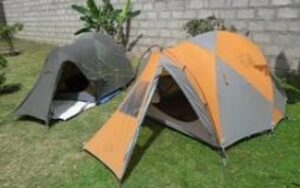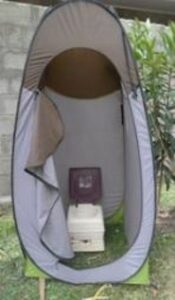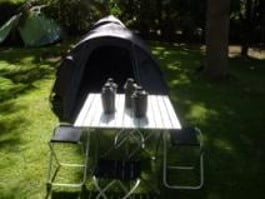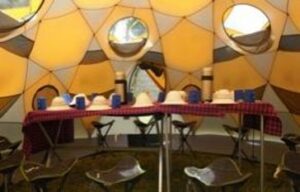INFO COVID 19 : la Tanzanie est ouverte aux touristes sous réserve d'un schéma vaccinal COMPLET à partir de 5 ans ou d'un test PCR négatif de moins de 72h.
INFO COVID 19 : la Tanzanie est ouverte aux touristes sous réserve d'un schéma vaccinal COMPLET à partir de 5 ans ou d'un test PCR négatif de moins de 72h.
From
$2570
/ PEOPLE
Kilimanjaro Marangu Route - 08 days / 07 nights
STAGES OF YOUR TRIP

CONTACT AN ADVISOR
Welcome on arrival at Kilimanjaro Airport and transfer to the lodge located close to the airport.
Free dinnerand overnight stay at the lodge.
Moyoni Airport Lodge (or equivalent).
After breakfast, transfer to Marangu Gate at an altitude of 1,800 metres. During the formalities, get to know the cook and your porters. Depart for a slow 4-hour walk through dense rainforest to Mandara Hut (2,750 metres). If you’re still in good shape when you arrive at the hut, a short walk to Maundi Crater is in order, from where you’ll have a beautiful view of the plain, La Jipe and in the distance the Pare and Usambara Mountains.
Dinner served at the refuge. A hot, hearty meal will give you the strength you need for the next day.
Departure around 08:00. Around 45 minutes’ walk through the forest, continuing across the high moorland before reaching your second hut at 3,720 metres. Magnificent views of the Mawenzi.
Dinner and overnight at the refuge.
Take advantage of this day in Horombo to gently acclimatise to the altitude. The aim of this day is to discover how your body reacts to altitude.
This time, take the left-hand path after the refuge and you’ll pass the last waterhole.
The vegetation gradually disappears, giving way to a desert. It’s essential to force yourself to walk slowly, and to enjoy the grandiose atmosphere of the high-altitude deserts and the landscape.
You will reach Kibo Hut, the last refuge at 4,700 metres.
We set off very early in the night. The slope is steep and steady, and the climb proper begins.
We stop off at Hans Meyer Cave en route. The cold becomes very intense. After a 5/6 hour walk, at the first light of dawn, you will reach Gillman’s Point (5,685 metres). This is the first summit, the rim of the crater. The real Uhuru Peak (Pic de la Liberté), 5,895 metres, can be reached in 1 hour 30 minutes on the snow-covered ridge of the volcano: the summit of Africa and the crowning achievement of all your efforts. You can then count on 1 hour 30 minutes to reach Gillman’s Point and another two hours to reach Kibo Hut before arriving at Horombo Hut.
Leisurely descent to the starting point of the trek, via Mandara Hut. Arrive at Marangu Gate 4 or 5 hours later. Welcome by the driver.
Welcome at the gate and transfer to your hotel
Dinner and overnight stay at Moyoni Airport Lodge (or equivalent)
After breakfast at the lodge, you will spend a free morning to organise on site.
Lunch not included.
After lunch, departure for Kilimanjaro airport for your international flight or flight to Zanzibar for the extension.
END OF OUR SERVICES
We do not organise departures in March / April / May and November (unfavourable season).
| NUMBER OF PEOPLE | 2022 RATES PER PERSON |
| 2 participants | $1 660 / person + $910 / person park tax |
| 3 participants | $1,370 / person + $910 / person park tax |
| 4 participants | $1,310 / person + $910 / person park tax |
| 5 participants | $1 180 / person + $910 / person park tax |
| 6 participants | $1 110 / person + $910 / person park tax |
| 7 participants | $1 070 / person + $910 / person park tax |
| 8 participants | $1 040 / person + $910 / person park tax |
| 9 participants | $1 010 / person + $910 / person park tax |
| 10 participants | 90 / person + $910 / person park tax |
“Our prices are subject to changes in exchange rates, government taxes, increases in air and hotel fares, as well as air and hotel availability at the time of customer confirmation.” On 03/05/2022




Climbing Kilimanjaro is a real sporting challenge, not just a simple mountain walk.
Temperatures at the summit can be extreme, particularly at night when it can be between -5°C and -20°C. During the first few days, temperatures are temperate, sometimes hot, and there may be some bad weather. The lack of oxygen due to the effects of altitude requires the body to acclimatise by increasing the level of red blood cells in the blood. Good hydration (3 to 5 litres of water a day) is absolutely essential.
You will therefore need to bring : All your belongings are divided between a rucksack worn during the walk and a 55-litre soft canvas carry bag, given to everyone at the briefing. (Entrusted to the porters).
The bag entrusted to the porters must not exceed 12 kilos per person + a travel bag which will remain at the lodge during the ascent.
For water:
Please note that from the 2nd day onwards, you will be drinking spring water; we strongly advise you to use purification tablets.
*Plastic bottles of mineral water are banned in Kilimanjaro National Park to reduce the amount of waste.
+ A FIRST-AID KIT
– Everything you need for this type of climb (ask your doctor for advice) Painkillers, eye drops, vitamin C, compeed for blisters, mosquito repellent, paracetamol, anti-diarrhoea medication, antibiotics and disinfectant with a compress.
Passport valid for 6 months after the date of return.
For French nationals, a visa is compulsory. It can be obtained on arrival at the airport. You will be asked to pay $50 in cash (USD banknotes dated after 2006). Waiting times at the airport for visas can be long; expect to wait between 2 hours and 2.5 hours. Visas can also be obtained online, but please allow 2 to 3 weeks for processing. The Tanzanian authorities’ official online visa application website: https://eservices.immigration.go.tz/visa
+1h in summer, +2h in winter compared with France.
The yellow fever vaccine was reinstated in early 2008. You should allow more than 14 days before your departure. Don’t forget to take your international vaccination certificate with you, as customs officials may ask for it when you enter Tanzania or Zanzibar.
Vaccinations not compulsory but recommended: against typhoid, hepatitis A, hepatitis B, DTP and in certain cases against meningitis A and C, and against rabies (check with your doctor).
Preventive treatment against malaria is essential. Remember to take mosquito repellent with you.
English and Swahili are the two official languages. There are also many African dialects, reflecting the country’s tribal diversity.
Tanzanian shilling: 1€=2600 TSH (January 2019)
For US dollars, remember to take notes issued after 2006 !!!
Since the recent ban on bureaux de change in Tanzania, you can only withdraw Tanzanian shillings from ATMs in Arusha, Dar es Salaam and Zanzibar. However, the euro and, more particularly, the US dollar are widely used and may suffice to pay for all your purchases in Tanzania (USD notes dating from after 2006). But be sure to carry small denominations;
If you wish to pay for certain purchases by credit card, you should be aware that additional credit card payment charges will be applied (approximately 4 to 6%).
The current is 230V. The plug is English; an adaptor is recommended.
Apart from the Kilimanjaro ascent, which requires special equipment, the weather is relatively warm all year round. You should, however, bring a jumper and windbreaker for nights spent near the crater or in a bivouac, as well as for stays in July and August, which can be cooler months. It is advisable to wear light trousers in the parks to ensure peaceful cohabitation with certain insects.
You’ll also need light walking shoes, a hat, sun cream, a torch, binoculars and batteries for your camera. Cameras with zoom lenses can be hired.
Please note that for domestic flights, only soft baggage, strictly limited to 15kg, is allowed (including hand baggage)!
It is common practice to tip people who accompany or assist you on your journey. To take your bag to your room, the porter will expect a small tip of TSH 500 (around €30), and the driver guide will expect $20 per day on safari.
Tanzanian Consulate and Embassy in the United Kingdom:
Tanzania High Commission,
3 Stratford Place W1C 1AS, London,
UNITED KINGDOM
Tel: +44 207 569 1470 / +44 207 491 3710
Email: london@nje.go.tz
https://www.uk.tzembassy.go.tz/
Embassy of the United Kingdom in Tanzania in Dar es Salaam :
British High Commission in Dar es Salaam
Tanzania Umoja House Garden Avenue
PO Box 9200 Dar es Salaam Tanzania
Phone : (+255) (22) 229 0000
Free days in Zanzibar
Village visit
Following the Great Migration
Meeting local people
Visit to Arusha National Park
Crossing the Ngare Nanyuki River between buffalo and giraffe
Free days in Zanzibar
Village visit
Following the Great Migration
Meeting local people
Visit to Arusha National Park
Crossing the Ngare Nanyuki River between buffalo and giraffe
![]() Nous revenons tout juste de 3 jours de safari en Tanzanie (Tarangire, Ngorongoro et lac Manyara) avec Hors Pistes et nous avons encore les yeux qui brillent et des souvenirs... read more pour toute la vie! Nous avons eu un guide parfaitement francophone (Bruno), adorable, à l'écoute, très cultivé sur les animaux mais aussi sur le pays, prudent au volant et très chaleureux. La voiture était très confortable, tout comme les hôtels. Du premier contact il y a plusieurs mois jusqu'aux derniers instants du safari, Hors Pistes a été top ! Nous recommandons vivement !
Nous revenons tout juste de 3 jours de safari en Tanzanie (Tarangire, Ngorongoro et lac Manyara) avec Hors Pistes et nous avons encore les yeux qui brillent et des souvenirs... read more pour toute la vie! Nous avons eu un guide parfaitement francophone (Bruno), adorable, à l'écoute, très cultivé sur les animaux mais aussi sur le pays, prudent au volant et très chaleureux. La voiture était très confortable, tout comme les hôtels. Du premier contact il y a plusieurs mois jusqu'aux derniers instants du safari, Hors Pistes a été top ! Nous recommandons vivement !
![]() Super voyage organisé par Hors Pistes.
Super voyage organisé par Hors Pistes.
La safari était extraordinaire : nous avons vu tous les animaux de la savane. notre guide était impressionnant.
C'était notre voyage de noce et... read more nous n'avons pas été déçu.
Les lodges étaient à couper le souffle ! Tout était parfait.
Nous avons aussi très bien mangé. Tout était prévu de A à Z jusqu'à notre départ pour Zanzibar.
Nous avons eu aussi quelques petites attentions pour notre voyage de noces (cadeaux, pétales...).
Merci !
![]() Un formidable voyage, avec un safari à ne pas manquer, cela serait dommage ! Nous avons eu la chance de voir beaucoup d’animaux, nature verdoyante, guide au top et en... read more français ! Organisation parfaite et les hôtels choisis magnifiques. C’est un budget c’est vrai mais quel beau cadeau ! Inoubliable
Un formidable voyage, avec un safari à ne pas manquer, cela serait dommage ! Nous avons eu la chance de voir beaucoup d’animaux, nature verdoyante, guide au top et en... read more français ! Organisation parfaite et les hôtels choisis magnifiques. C’est un budget c’est vrai mais quel beau cadeau ! Inoubliable

CONTACTER UN CONSEILLER
Bonjour, je suis Gary d'Hors Pistes Voyages ! Je suis là pour répondre à vos questions :)